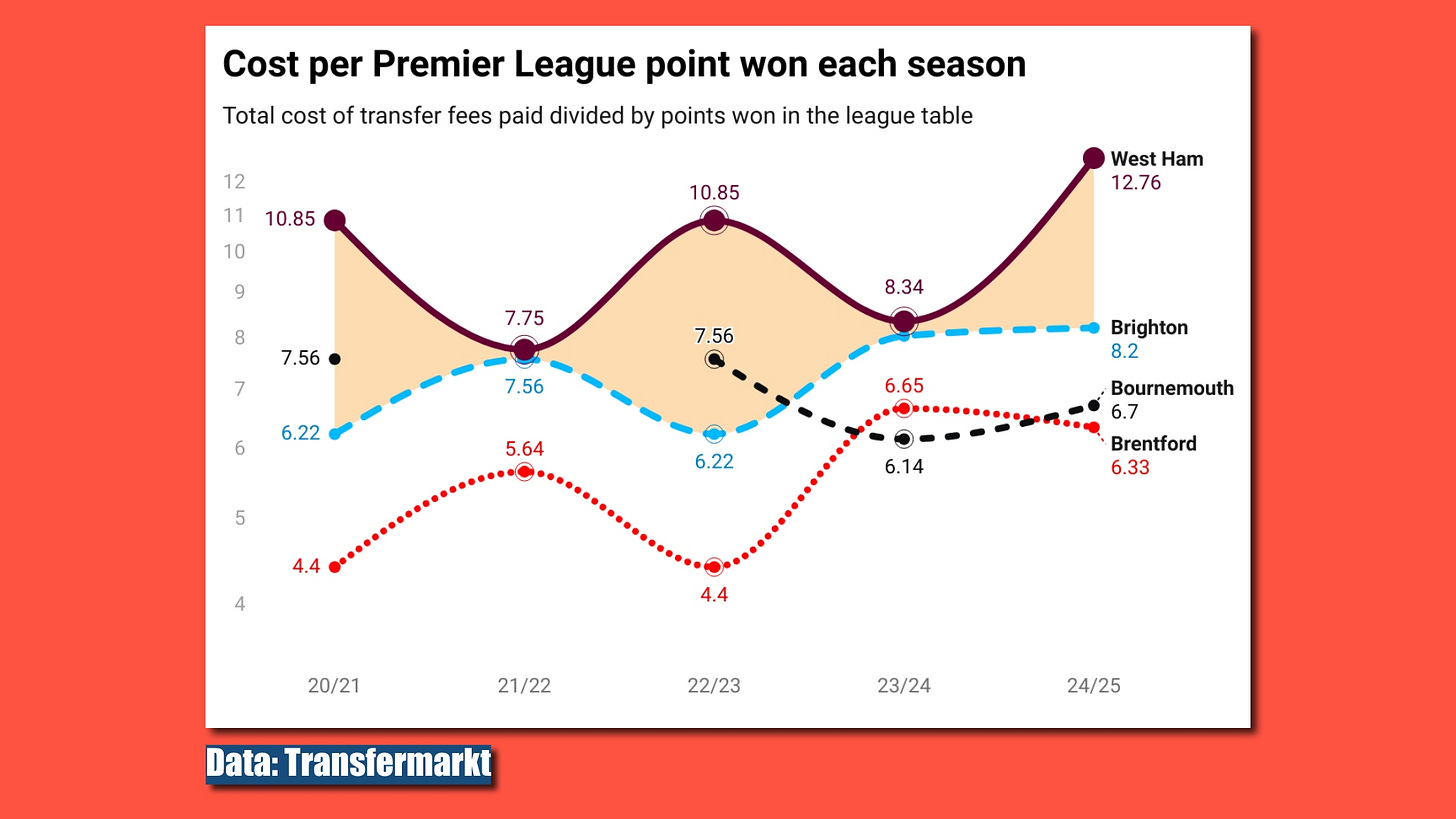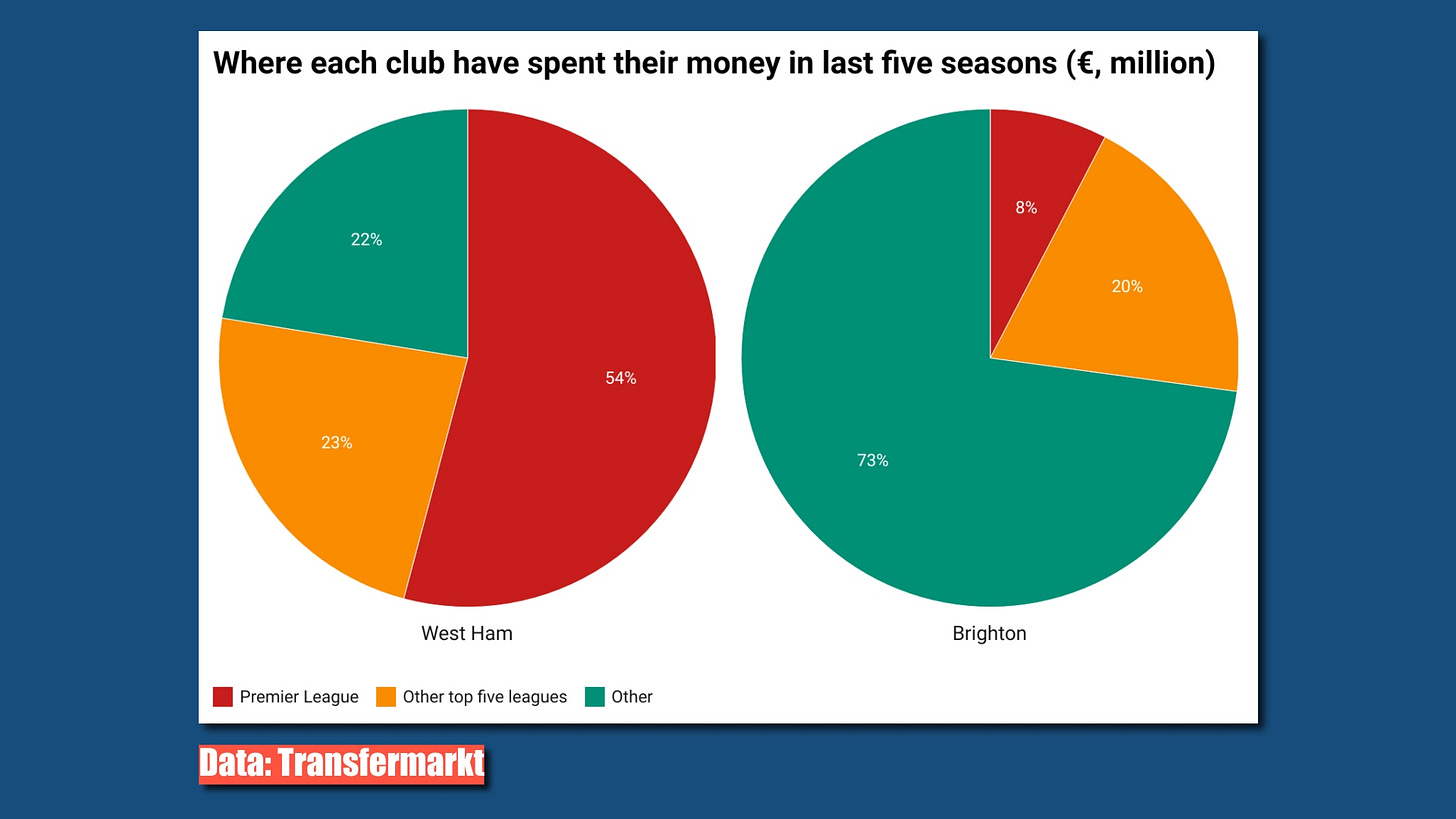Perhaps the most startling thing about the Premier League table at this point of the season is just how low West Ham happen to be on it. Putting aside the three clubs destined for relegation, the Hammers have effectively been the second worst established top-flight club in the division this season.
There’s much to be said for how West Ham handled the dismissal of David Moyes, what came after that and whether or not Graham Potter can improve their fortunes in 2025. But today I want to instead take a look at how the club has been run off the pitch and why West Ham’s inability to keep up with the well-run clubs in the middle of the Premier League table has led to them dropping towards the bottom of it.
In terms of money spent, few could doubt the intentions of West Ham’s owners. The London club have spent more than all but six clubs in England over the last five seasons, which is actually more than Liverpool, Nottingham Forest and Aston Villa in that time. But the problems have arisen due to the manner in which the Hammers have spent their money in the transfer window.
When we take a look at how much money West Ham have spent per point won this season and compare it to Brighton, Bournemouth and Brentford, we can see that the Hammers have spent almost twice as much as the latter two and around €6m more per point than Brighton. And those figures have been consistently higher than the three smarter clubs over the course of the last five seasons.
This, unquestionably, is due to West Ham signing older and more established players, where Brighton, Bournemouth and Brentford typically sign younger players from relative backwaters in European or even global football. And when we take a closer look at where West Ham are spending their money this issue becomes abundantly clear.
For example, in the last five seasons West Ham have spent more than half of the transfer fees they’ve paid on players from other Premier League clubs and a further 23 percent on players from Europe’s other top five leagues. In stark comparison, Brighton have only spent around eight percent of their total transfer budget on players from other Premier League clubs, while a massive 72 percent of their transfer budget has gone on signing players from outside Europe’s top five leagues, either in other divisions across the continent or even further afield in South America, North America or Asia.
But that’s not West Ham’s only issue. Signing players in the Premier League would be fine if they were young talents, but in most cases West Ham are spending vast amounts of money on ready-made stars in the top-flight. When we look at the average age of their signings each season in comparison to Brighton’s we can see that the only time the two clubs come close to one another was last season, which was specifically because the Seagulls signed a 37-year-old James Milner.
Remarkably, over the course of the last five seasons Brighton’s signings have, on average, been three years and seven months younger than the typical West Ham signing. So, in other words, West Ham are signing older, expensive players while the smaller clubs with smaller budgets are leapfrogging them with younger, better scouted players from outside of the Premier League. So much so, that when we calculate the average age of every current West Ham player when they joined the London club, it comes out at 26.1 - which is the joint highest average in the entire Premier League.
West Ham are obviously a historic and hugely supported club that have demands on them that simply don’t exist at Brentford or Brighton, but if they don’t get smarter in the transfer market soon they’ll fall further and further behind these nimble and better run clubs. And for all of Potters’ talents as a manager, there is only so much he can do for West Ham if he’s stuck working with a squad that simply isn’t up to scratch compared to their rivals in the Premier League.













